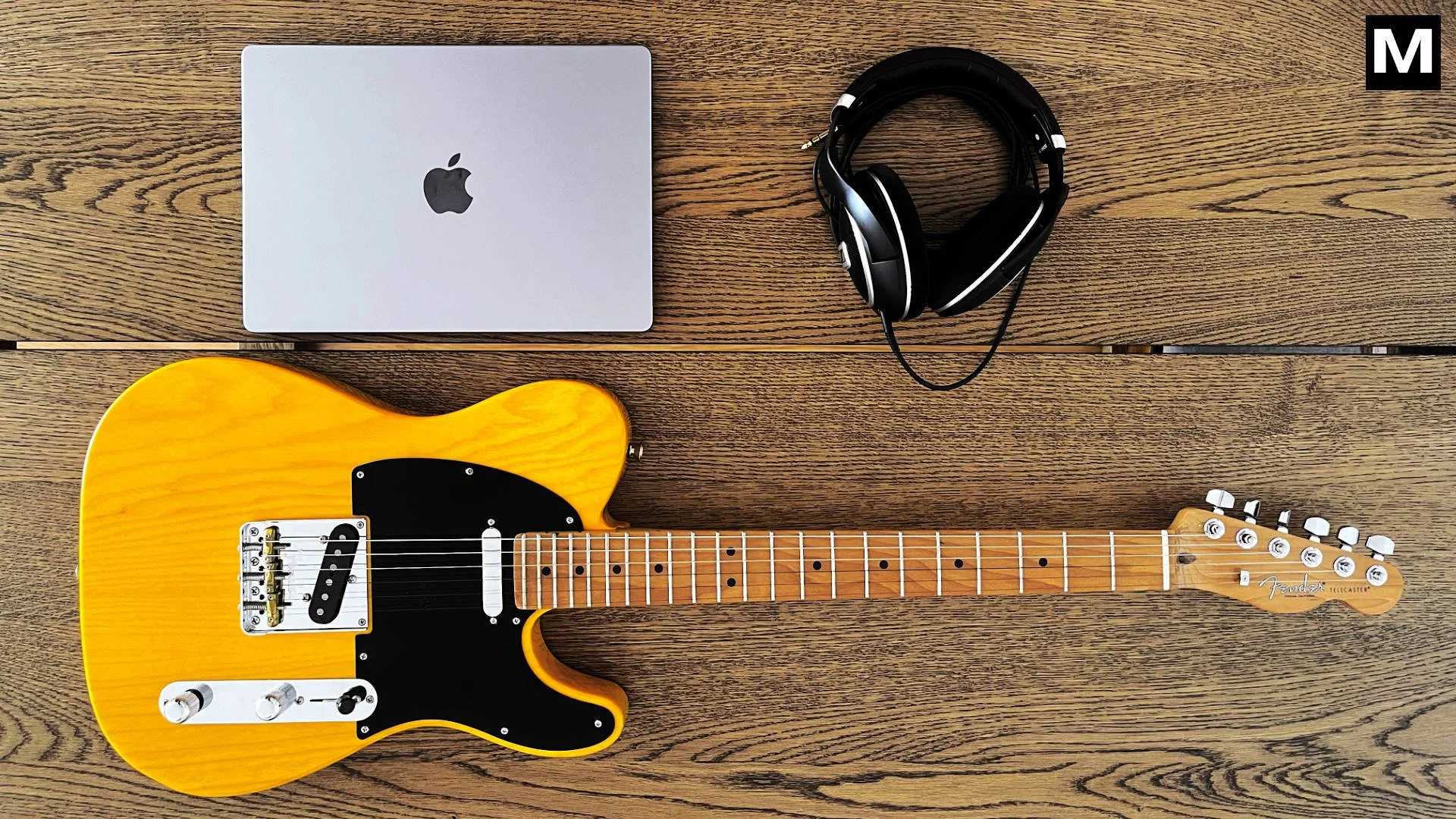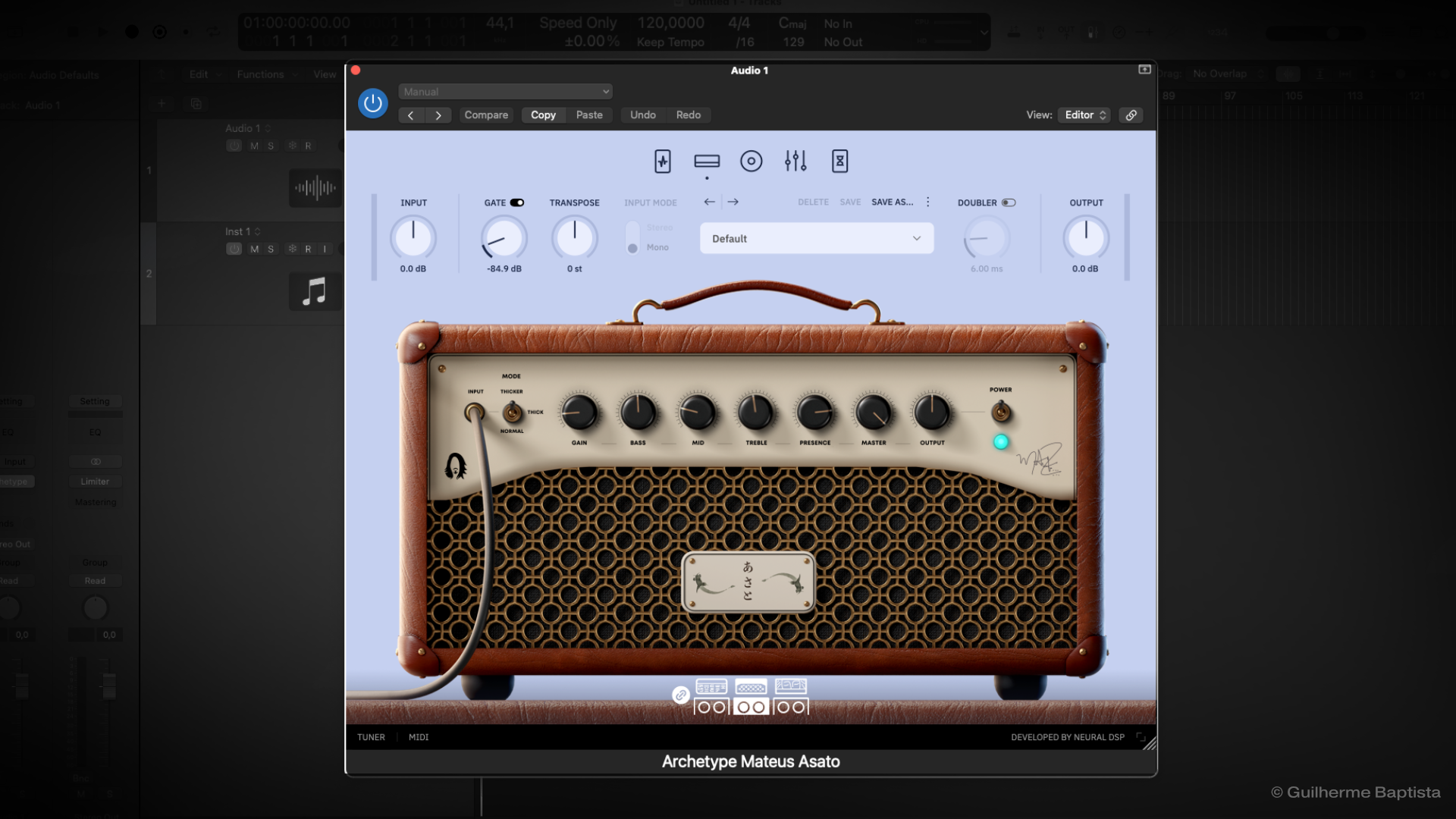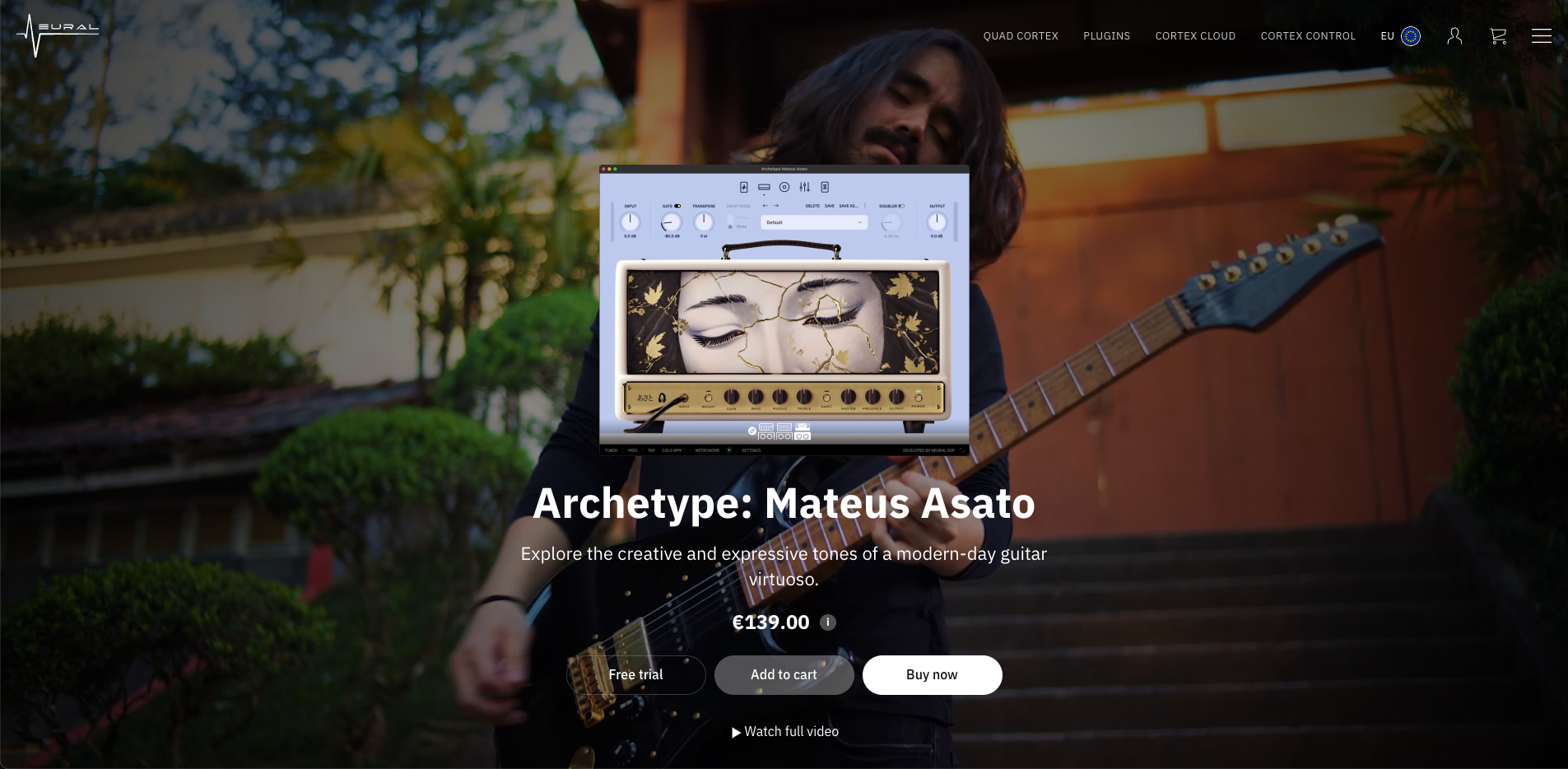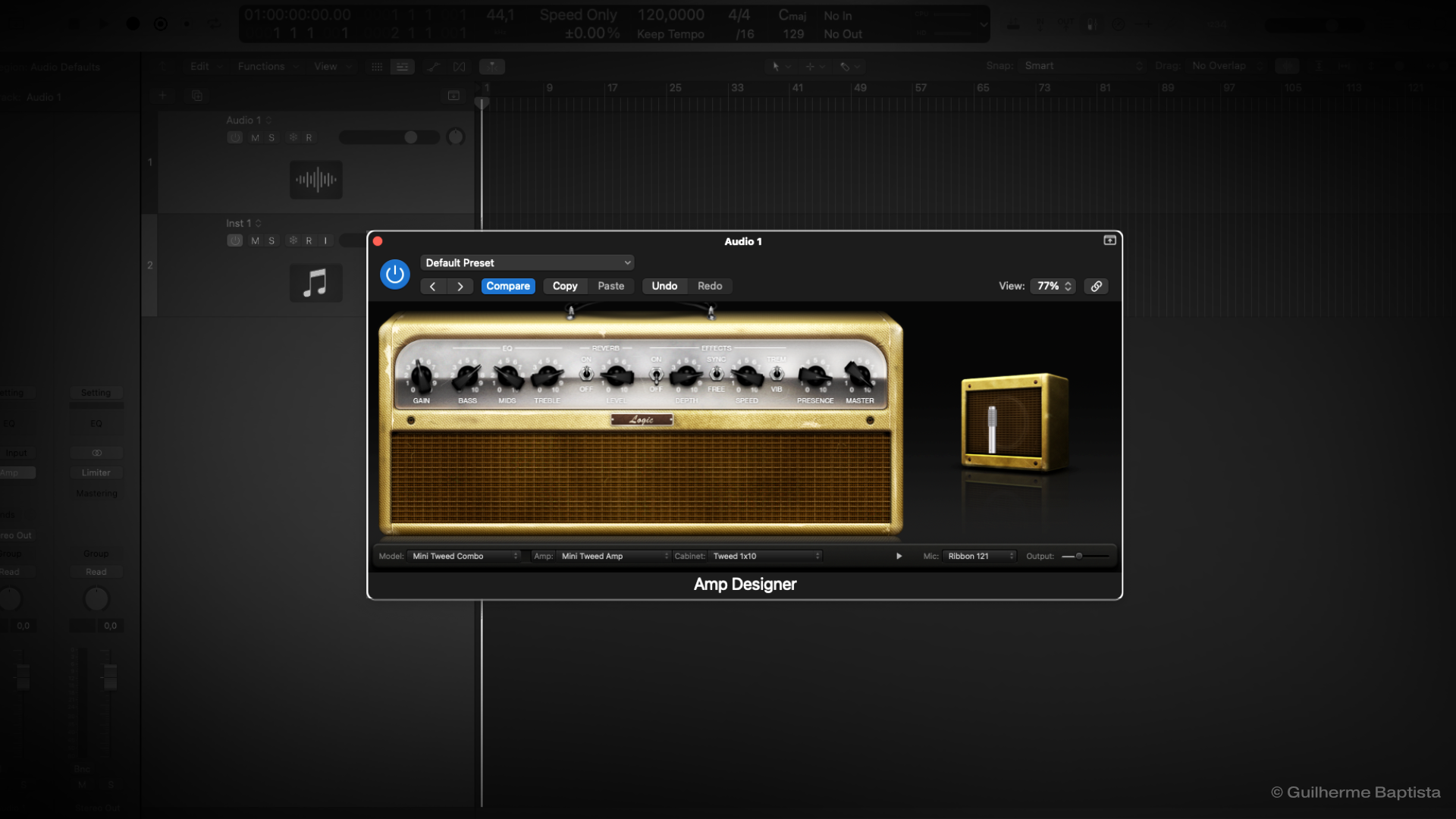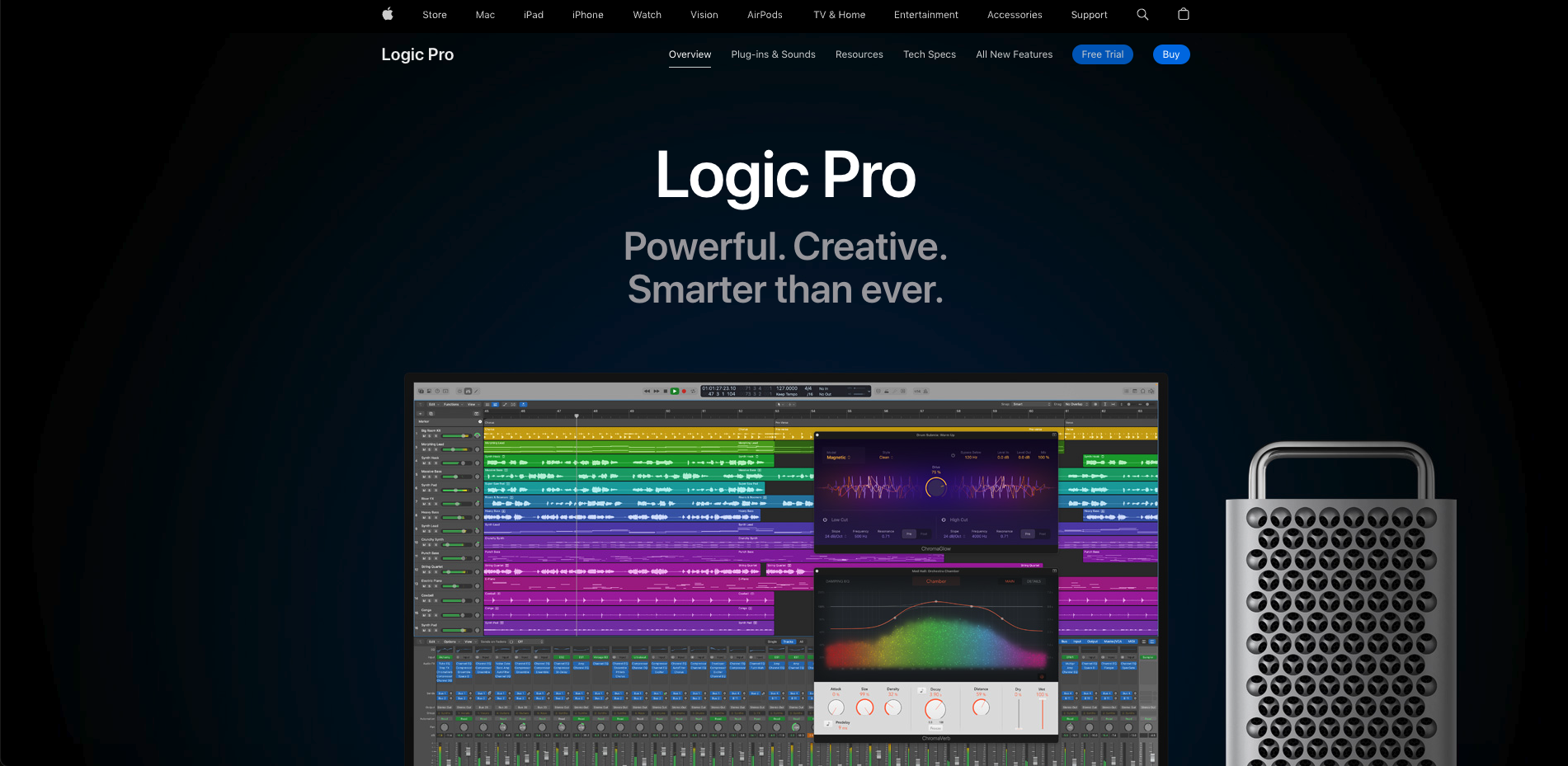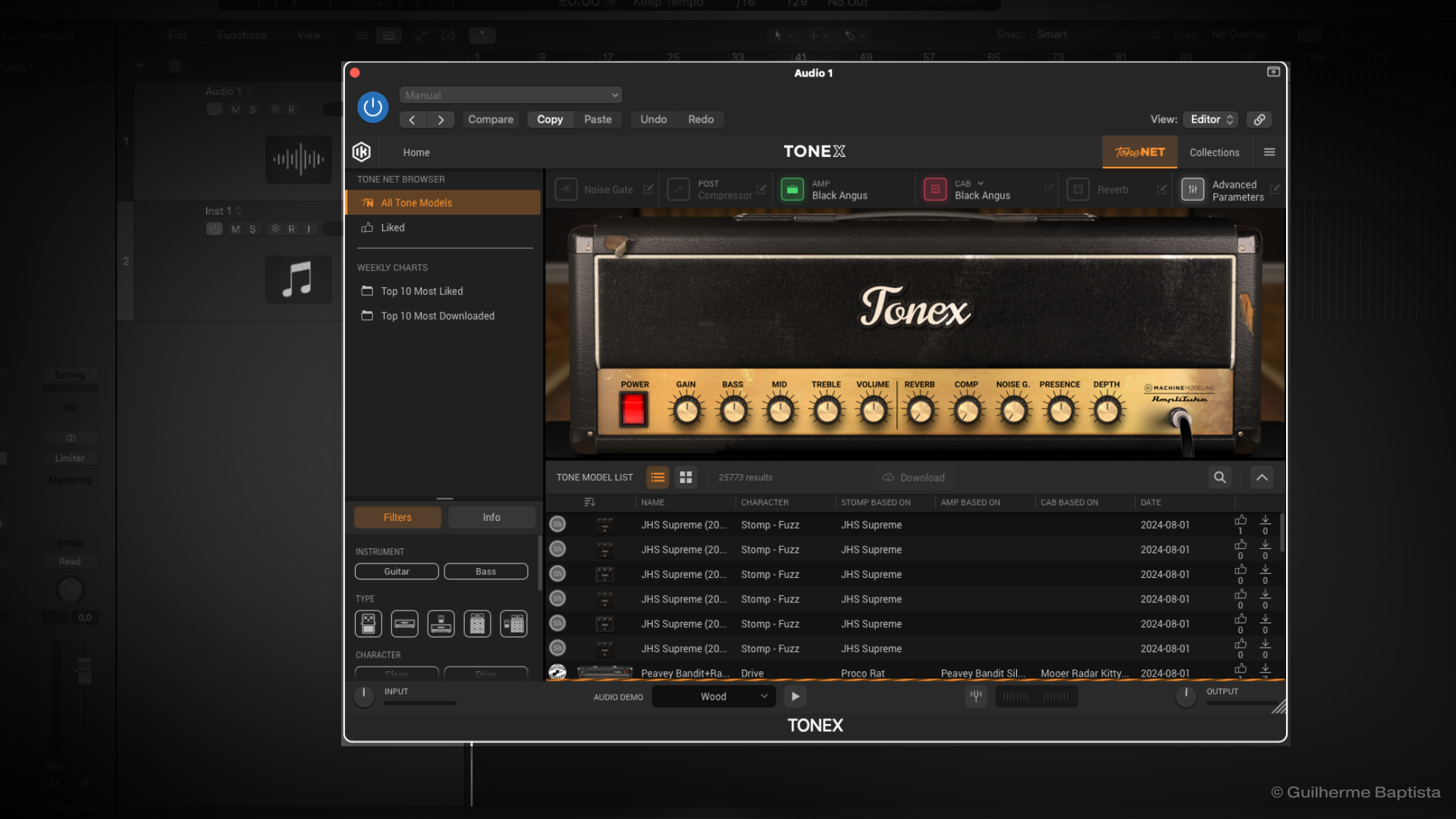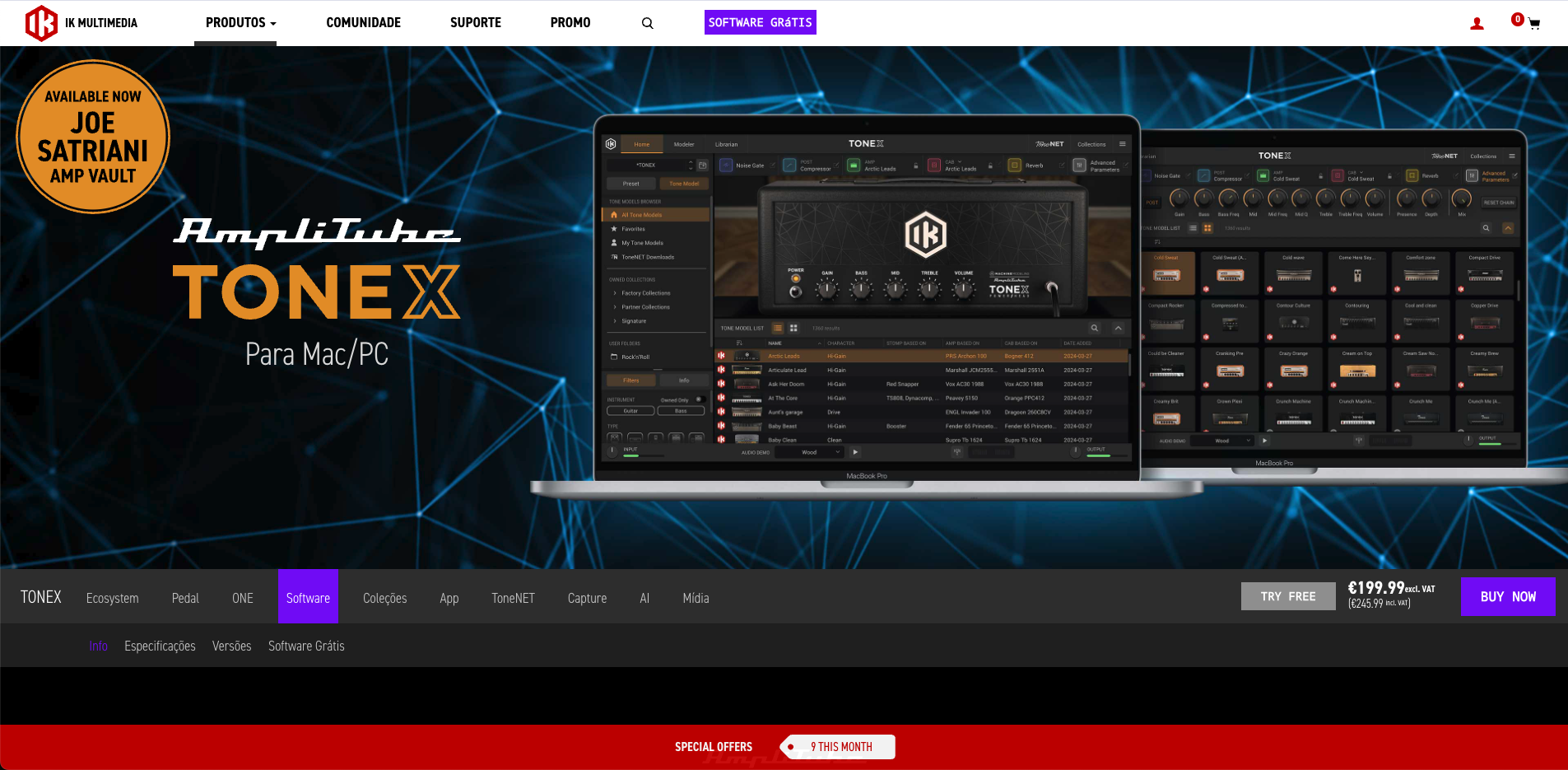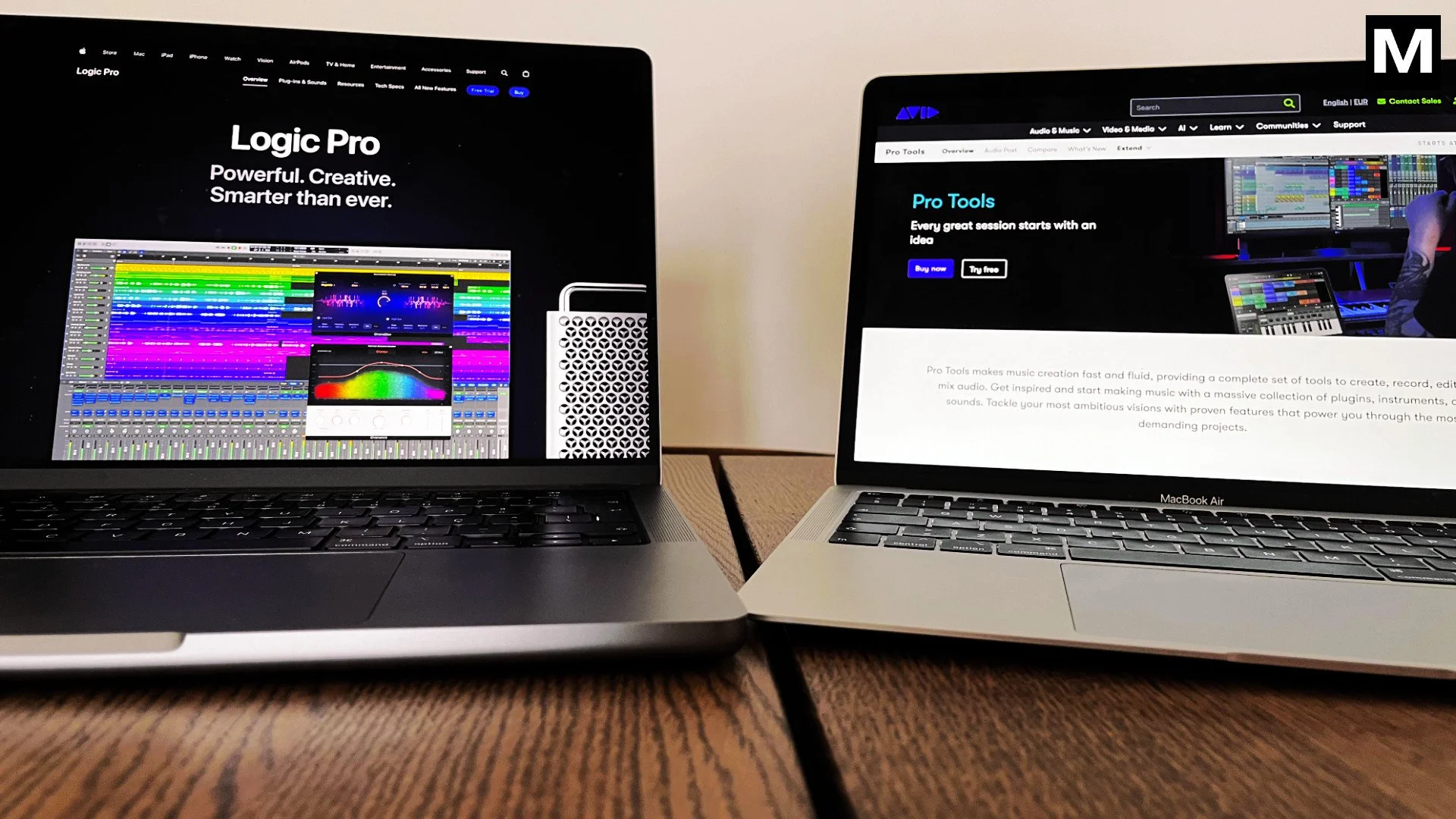Best Guitar Plugins for Logic Pro (Beginner's Guide)
First off, it’s important to define what a guitar plugin is, since it can mean different things in different contexts. There’s essentially two different types of guitar plugins, guitar amp sims and MIDI guitar libraries.
Guitar amp sims are plugins which will process the sound of your guitar recorded directly through your audio interface and simulate the sound of a real amplifier and pedals - so your guitar sounds like you’re playing a physical guitar rig. E.g. Guitar Rig Pro 7 by Native Instruments or Helix Native by Line6.
MIDI guitar libraries are MIDI plugins that play whatever MIDI performance you feed them through pre-recorded sounds of a guitar, so you can program a guitar in your DAW without having to actually play the instrument. E.g. Native Instruments’ Session Guitarist - Electric Mint.
In this article we’ll look at guitar amp sims, namely at my Top 3 Favorites, and pick them apart to see if we can find the best option for you.
What’s important in a guitar plugin?
Sound Quality: You need something that sounds really good, and not all plugins accomplish that. However, the very best sounding plugins are often not the most useful or fully-featured. That’s why claiming something is “the best” isn’t super useful.
Variety of Amps and Pedals/Effects: For most players, having a good number of different amps and pedals to play with is fundamental. Guitarists tend to play many different genres and with different people all the time, and it’s important to acommodate that. However, if you are - say - a Metalcore or Country guy and nothing else, there might be something more specific that’s perfect for your exact style.
Ease-of-Use: Not all plugins are made alike, and one of the most important characteristics (which has been regularly commented on by the Andertons team on their YouTube channel in regards to hardware modellers) is the “how fast can you get to a sound?” factor. Tinkering around might be fun, but being able to pull up a plugin and get a huge sound in less than 5-10 clicks is very important.
Plugin Format: Plugins come in a couple different formats. Mainly these are Audio Units (AU), VST, VST 3 and AAX. In my experience the majority of plugins come in all of these formats - but keep in mind that Logic Pro only works with Audio Unit plugins - so if for some reason the plugin you’re looking at doesn’t have an AU version, it’s a no-go for Logic users.
Performance: Different plugins will be coded differently, and so they’ll affect your computer’s resources in wildly different ways. It’s always a great idea to install a demo of the plugin you’re thinking of buying (if available) and making sure that the software runs smoothly on your machine and doesn’t create any problems in your DAW.
Pick #1 - Neural DSP Archetype Mateus Asato
My favorite option 😍
Neural DSP has risen to fame amongst guitarists in the last few years, and it’s no wonder - their plugins are second to none. I personally own 3: Archetypes Cory Wong, Petrucci, and Mateus Asato.
I’ve used them extensively in full-fledged client productions (which are distributed on Spotify - not just demos btw) and I always have the same impression once I deliver the master to the artist - these plugins sound amazing.
Neural DSP’s plugins are created in collaboration with specific artists (the Archetypes [e.g. Mateus Asato, Gojira, Plini, John Petrucci, Cory Wong]) and specific amp manufacturers (e.g. Soldano, Morgan, Fortin) and they aim to recreate either the artist’s particular rig or a software version of the manufacturer’s amp.
This differs quite a bit from the usual “pack every popular amp and pedal ever in a single plugin” approach that other brands have taken - and it’s a welcome departure for me.
This approach gives Neural DSP the opportunity to make a really solid product every time they put out a plugin. So far I’ve tested 7 different ones (Rabea, Tim Henson, Fortin Cali Suite, Tone King Imperial + the 3 I own) and I’ve yet to find one that isn’t great. Of course I much prefer some to others, but that’s to be expected. This not to say that you should ever buy any plugin blindly - be sure to download the demo and take it for a go first.
About the Mateus Asato Archetype in specific: this ends up being the guitar plugin I use the most, not because I think it’s the best sounding one or the most realistic (it’s not), but because it marries my American Professional II Telecaster so perfectly. And plugins/amp sims are not just about realism and sound quality (though it matters a lot), they’re also very much about context: what guitar you have, what style you play, what effects you like, etc.
✅ What I like:
Very good sounding amps, especially for single coils
Telecaster players MUST try this plugin
Great sounding compressor
Best user interface in the game (as per all Neural DSP plugins)
Stock presets are usable, even in recording contexts
Tweaking sounds is very easy and intuitive
You can load your own IR’s
❌ What I don’t like:
Reverb and Delay modules are usable, but not my favorite
Modulation pedal is not to my liking. Cory Wong and Petrucci are much better imo
High gain sounds are achievable and usable, but not amazing like in Petrucci (to be expected)
💨 How fast can you get a sound?
Without using presets, I can get from the default start-up panel of the plugin to a usable sound in 3 minutes or under, every time. It’s very well optimized for fast usability.
🥵 How CPU intensive is it?
This is what the Performance Meter on Logic Pro looks like on my Macbook Pro M1 Pro 16GB with 1, 4 and 8 instances of the plugin running - no other tracks or plugins are active in the project
Slightly Intensive
Sound Examples
Here’s some sound examples recorded by me for this article.
Guitar: American Professional II Telecaster
Audio Interface: Audient iD14 MKII
No post processing
All Stock Presets (I didn’t modify them in any way)
Examples:
Sound 1: Neck pickup - OG Shell Pink 2 preset
Sound 2: Neck Pickup - Nick De Pirro (Clean) preset
Sound 3: Middle Pickup - Tennessee has so many double letters! preset
Sound 4: Bridge Pickup - Supreme preset
Sound 5: Bridge Pickup - Metal Rhythm preset
🤔 Who is this for?
Guitarists looking for high quality amp sims with good effects that can cover many styles
Focus on very good clean and edge-of-breakup sounds with decent high-gain
Players looking for a really easy to use plugin
💰 Price: 139$/139€
Goes consistently on discount on Black Friday and Neural DSP’s anniversary (April)
⬇️ Buy here ⬇️
Pick #2 - Logic Pro’s Amp Designer
The FREE option 🤑
If the price tag on the Neural DSP stuff is pushing you away, then I’ve got the solution. Have you tried Amp Designer? Yes, that Amp Designer, the one that comes bundled with Logic Pro for absolutely free (as long as you pay for Logic, ofc).
Many of my students have a bias against stock plugins because someone told them they had to buy expensive 3rd party plugins to sound good.
This is total BS - a LOT of stock plugins are class leading, as good as any 3rd party options.
With that said, Amp Designer is Logic’s built-in solution for guitar sounds. Is it as good as Neural? Well let’s get that out of the way.
It’s not.
First off, Neural sounds better, sure. But that’s not all that matters.
Amp Designer has a very large selection of real life iconic amp models such as Fender Bassman, Vox AC30, Fender Deluxe Reverb, Marshall Plexi, Marshall JCM, Mesa Boogie Dual Rectifier, and a few others. This definitely makes this plugin a lot more versatile than an Archetype, which for some players might be critical - especially if you’re starting out and haven’t quite figured out your style yet.
To top it off in style, Apple even added in a full blown Pedalboard plugin (aptly named Pedalboard) and a Bass version of Amp Designer (called Bass Amp Designer).
✅ What I like:
Huge variety of Amps available
Pedalboard plugin is super fun to use and experiment
Includes a Bass solution
🤑 FREE for Logic users
Very well integrated within Logic
❌ What I don’t like:
Sound quality could be much better
Some amp models are downright unusable
No built-in IR loader (you can disable the cab and use a 3rd party IR loader)
High-Gain tones simply don’t cut it
💨 How fast can you get a sound?
Not as easy to get a sound as Neural, I’d say it takes me about 7 minutes to get a good sound and I can’t do it consistently. Takes a bit more work.
🥵 How CPU intensive is it?
This is what the Performance Meter on Logic Pro looks like on my Macbook Pro M1 Pro 16GB with 1, 4 and 8 instances of the plugin running - no other tracks or plugins are active in the project
Very Light
Sound Examples
Here’s some sound examples recorded by me for this article.
Guitar: American Professional II Telecaster
Audio Interface: Audient iD14 MKII
No post processing
All Stock Presets (I didn’t modify them in any way)
Examples:
Sound 1: Neck pickup - King’s Tone preset
Sound 2: Neck Pickup - Nice Wobble preset
Sound 3: Middle Pickup - Large Tweed Clean preset
Sound 4: Bridge Pickup - American Stack Distort preset
Sound 5: Bridge Pickup - American Stack Distort preset
🤔 Who is this for?
Beginners who want to try multiple types of amps
Players who don’t need high-gain and want a varied plugin
Guitarists who want to save money
Someone looking for a plugin that’s light on the CPU
💰 Price: Included with Logic Pro
⬇️ Buy here ⬇️
Pick #3 - IK Multimedia’s ToneX
The most realistic sounding option 🎸
Let’s not beat around the bush: ToneX is really cool.
ToneX is IK Multimedia’s latest entry into the plugin world and it made quite an impact in the market.
This one is quite different from the other options because the plugin is integrated into a larger ecosystem that includes a pedal, which allows users to capture real amps and turn them into playable amp models, much like the Kemper or Neural’s Quad Cortex.
The difference here is that you can access this tech for a lot cheaper with ToneX than the other guys - and that’s not for lack of quality.
I haven’t tried the ToneX pedalboard nor have I tried the paid version of the plugin, but I’ve spent considerable time with the free version of the plugin, which has limited models included by IK Multimedia and a cap on the number of external Amp Models you can import.
What I’ve learned from my time with the plugin, more specifically while using Tone Junkie’s free ToneX Vox AC30 and Deluxe Reverb models (get them here), is that ToneX is an incredibly realistic guitar amp sim plugin. Quite honestly, THE most realistic I’ve tried so far, especially while using Tone Junkie’s super high-quality stuff.
With that said, there’s some drawback to consider here too (nothing’s perfect).
First, the plugin interface is quite convoluted, bloated and frankly not the prettiest. When compared to Neural, it shows that there’s a lot of work to do here.
Secondly, the free version has very few amps, most of them are beyond a pay wall. If you want to get something that sounds awesome for free, Tone Junkie’s pack is your best bet.
✅ What I like:
Best sounding amp models in any plugin (so far)
Included effects sound good
Includes models of real pedals (they sound awesome)
Includes a bass solution
Load your own IR’s out of the gate
❌ What I don’t like:
Interface needs a lot of work
Slow to use
Included effects are very limited
💨 How fast can you get a sound?
The ToneX plugin interface is very bloated and not very well organized, so it becomes quite tedious and long-winded to get a good sound. However, when you do, holy molly. It usually takes me about 10 minutes to get the sound I want.
🥵 How CPU intensive is it?
This is what the Performance Meter on Logic Pro looks like on my Macbook Pro M1 Pro 16GB with 1, 4 and 8 instances of the plugin running - no other tracks or plugins are active in the project
Very Light
Sound Examples
Here’s some sound examples recorded by me for this article.
Guitar: American Professional II Telecaster
Audio Interface: Audient iD14 MKII
No post processing
All Stock Presets (I didn’t modify them in any way)
Examples:
Sound 1: Neck pickup - Bright Loud Clean preset with added Reverb from ToneX
Sound 2: Neck Pickup - Sparkling Clean preset with added Reverb from ToneX
Sound 3: Middle Pickup - Pushed Oldie preset with added Reverb from ToneX
Sound 4: Bridge Pickup - Hot Educator preset with added Reverb from ToneX
Sound 5: Bridge Pickup - Power Scooped preset with added Reverb from ToneX
🤔 Who is this for?
Players looking for the highest possible amp model sound quality in a plugin
Guitarists looking for good sounding models of real overdrive pedals
Players that are interested in using the same sounds at home and live with the pedal
💰 Price: 299$/299€
ToneX can be bought in different ways. If you want the pedal, it’ll run you 399$/399€, and it includes the highest tier of the plugin (1000+ amps). If you only want the plugin, you can buy Tonex MAX (299$/299€) which includes everything (1000+ amps), ToneX (199$/199€) which is capped at 400 Tone Models, or get the free ToneX CS version. Lastly, you can also buy the mini pedal, called ToneX One, which includes a special software version called ToneX SE, which includes 200 Tone Models
⬇️ Buy here ⬇️
And by the way…
If you want to skyrocket your production skills, check out my course. It’s 6 weeks, live on Zoom and 1-on-1 with me. I’ll teach you everything you need to know to start your career in the best way possible. And it’s pretty well priced too! Go check it out:

